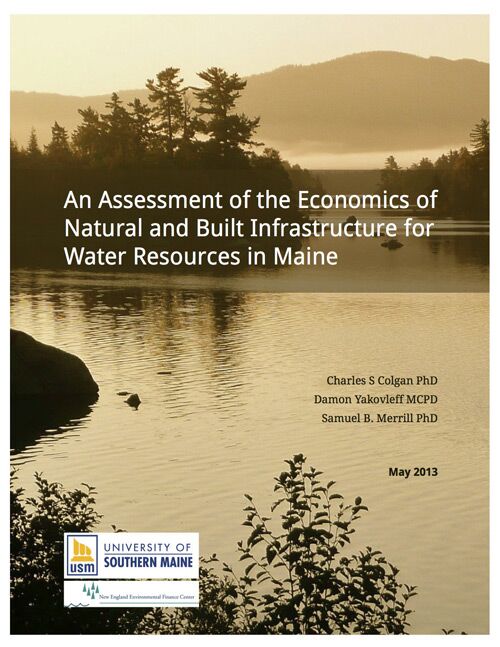Study: Land conservation can save state water costs
 A new study by the University of Southern Maine and the New England Environmental Finance Center says Maine can save on the costs of public water infrastructure by conserving particular natural areas.
A new study by the University of Southern Maine and the New England Environmental Finance Center says Maine can save on the costs of public water infrastructure by conserving particular natural areas.
Some of Maine's best drinking and storm water treatment infrastructure won't cost anything to build. But the wetlands, headwater forests and estuaries that reduce the need for drinking water treatment plants, storm water runoff improvements and flood prevention measures are not all created equal.
That's according to a study released by the University of Southern Maine in May that assesses the economic value of the state's natural resources in terms of water infrastructure investments. Through case studies in other states and modeling of one York County watershed, the report says that land conservation efforts can drastically reduce the amount that state and local governments spend on building water treatment infrastructure.
The study also aims to give a rough picture of which geographic areas of the state are the least expensive and have the most potential to supplant the need for building more costly water treatment infrastructure, when possible.
Alexandre Mas, director of strategic initiatives for the Maine chapter of The Nature Conservancy, says the study falls in line with a bill before the Legislature's appropriations committee outlining a $50 million water infrastructure bond that calls for land conservation investments as part of a strategy to address drinking water, storm water and floodplain management issues.
The bill, LD 1455, would create an 11-member Water Resources Commission, tasked with deciding where to make those water infrastructure investments in the state.
A major part of the report offers geographic information system, or GIS, mapping done by The Nature Conservancy to outline unprotected areas that have potential benefits for water infrastructure.
"What we did isn't a definitive final product to say, 'Invest right here,' but we're really trying to start the conversation," Mas says.
The Nature Conservancy survey found the most acreage with both flood control and water quality benefits in Aroostook, York, Cumberland and Kennebec counties. Out of those, Aroostook County had the lowest average land cost, based on previous conservation purchases.
In total, the study's authors — Muskie School professors Charlie Colgan and Sam Merrill and New England Environmental Finance Center Research Associate Damon Yakovleff — found the state has about $28.8 million worth of land that could provide both water supply and flood control benefits and a total of $1.36 billion in land that would provide just one of those benefits around the state, acknowledging the difficulty of conserving all of that land.
"Because the cost of protecting all vegetated uplands and wetland areas in our watersheds would be prohibitively expensive and politically infeasible, it will be essential to develop ways to focus conservation efforts in the state on the areas expected to provide the greatest flood protection benefit for populated areas and critical built infrastructure," the study's authors write.
The study focuses its cost-benefit analysis in four areas: drinking water quality, mitigating floods, protecting culverts and managing storm water.
In each case, the study found potential costs that could be avoided through a combination of investments in "natural infrastructure" and "built infrastructure," language also used in LD 1455.
For example, all of Maine's largest urban areas have waivers from the U.S. Environmental Protection Agency, relieving communities like Portland, Lewiston and Bangor from a requirement to build water filtration plants for drinking water. In an estimate for the city of Portland, a previous study estimated that $44 million in natural infrastructure and other diffused infrastructure investments could save over $110 million compared with building a new filtration plant.
The study found similar savings by incorporating conservation investments into strategies to protect culverts, manage storm water and reduce flood threats. Scientists say the Northeast continues to see annual increases in precipitation, and expect sea levels to rise, by conservative estimates, 2 feet in the next century.
To draw out a cost comparison of investments in natural and built infrastructure, the study found the cost of all the land that would provide both water quality and flood control benefits is nearly 10 times the cost of all the current built infrastructure that manages the public water supply.
"This does not mean that additional investments to upgrade, repair and maintain built water supply infrastructure will not be necessary," the study found, "but the costs may be significantly reduced if natural infrastructure is included in the long-term investment mix."
See detailed findings in the full study, funded by the Doris Duke Charitable Foundation and the Elmina B. Sewall Foundation, online.










Comments